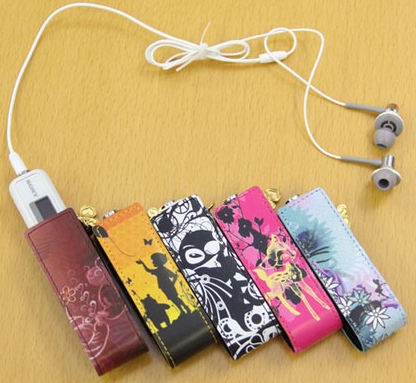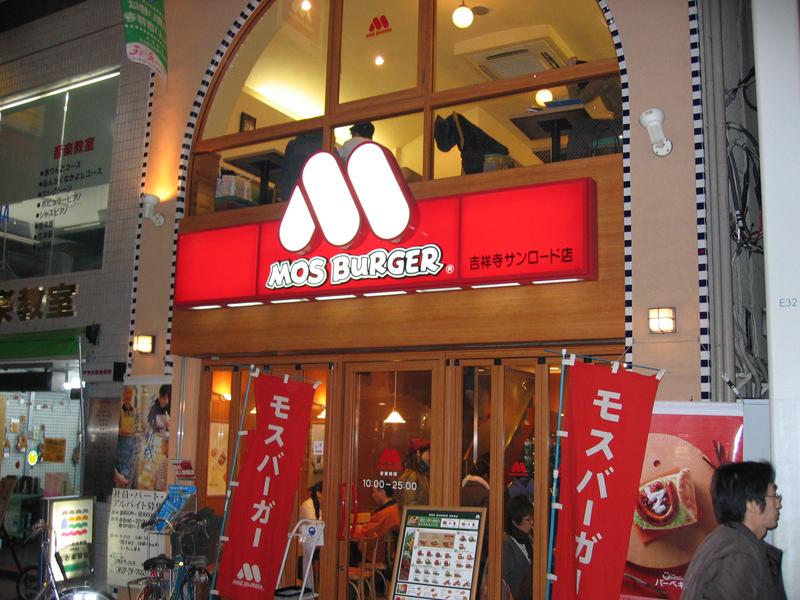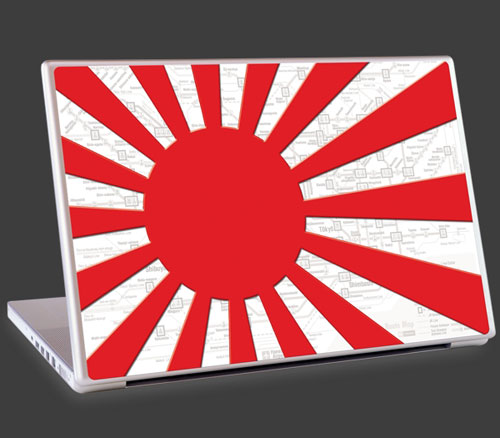|
How Japan originated? 
In 600 BC, Japan was founded by the Emperor Jimmu, an heir of the sun goddess and ancestor of the present royal family. In about AD 405, the Japanese court officially adopted the Chinese writing system. In the 6th century, after the introduction of Buddhism, Japanese culture was revolutionized and a long period of Chinese cultural influence began subsequently. Introduction Japan is an island-nation situated in East Asia, on the Pacific Ocean. Its name refers to "sun-origin", also known as the "Land of the Rising Sun". 
Japan consists of more than 3,000 islands. Honshu, Hokkaido, Kyushu and Shikoku are the 4 largest islands, accounting for 97% of Japan's land area. Japan, with an estimated of 128 million people, has the world's 10th largest population. It also has the world's 2nd largest economy by nominal GDP, and the 3rd largest in purchasing power parity. Additionally, Japan is also one of the largest exporter and importer in the world. It is therefore a developed country with high living standards, and the longest life expectancy in the world as well. The Flag The Japanese flag is called the "Hi no Maru", meaning "the circle which is the sun". The red circle symbolizes the rising sun after the name of the country. 
The flag with the sun off-centre and rays eminating from it, is the Japanese Naval ensign. It is not, as commonly believed, the old national flag, nor is it the "war" flag. Japanese Culture 
Japanese popular culture reflects the attitudes of the present and also provides a link to the past. Popular films, television programs, manga, and music were all developed from older artistic and literary traditions, and many of their themes and styles of presentation can be traced to traditional art forms. 
Many anime and manga are becoming very popular around the world, especially Japanese video games, music, and game shows. This has made Japan into a ‘super entertainer’ along with the United States and European Union. 
In the late 1980s, families were the focus of leisure activities, such as excursions to parks or shopping trips. However, Japan being a hard-working society, has little time for leisure; therefore the younger Japanese seek entertainment by themselves wherever they can. As a result, Japan has become a ‘youngsters’ paradise’. It is not uncommon to see Japanese commuters riding the train to work every morning, enjoying their favorite manga or listening to the latest tracks on their mp3s. 
A wide variety of popular entertainment is available. For example, a large selection of music, films, and huge comic book industry, among other forms of entertainment, from which to choose. Game centers, bowling alleys, and karaoke are popular hangout places for teenagers while older people may play shogi or go in specialized parlors. Japanese Food 
Nowadays Japanese enjoy a mixture of traditional Japanese food, including the basics of rice and miso soup, also equally a lot of seafood (sushi and sashimi for example) 
Japanese culinary art personifies its environment and populate. The easiness of getting fresh components led to sushi, high temperature and humidness led to assortments of preserved food like umeboshi, natto, tsukemono and soja sauce. A couple of good examples of modern Japanese fast food restaurant are Mos Burger and Yoshinoya. 
Japanese food is often adverted in connection with a healthy diet because of the large quantity of fish and vegetables and it become a popular type of health food n the U.S. and Europe. 
Traditional Japanese food is undoubtedly one of the healthiest and most delicious in the world and fortunately for most of us, foods like tofu, sushi, tempura, miso, soba, and even green tea are now familiar and freely available to people outside Japan. The thing about Japanese food is that you either will love it or you will downright despise it. With traditional Japanese food, there is no such thing as an in-between. However, chances are that if you hate Japanese food, then you probably haven't even tasted authentic Japanese food or you simply haven't given yourself the chance to like it. Unlike other cuisines, Japanese food is not something that you will appreciate after having only a bite. Like wines and cigars, Japanese food is an acquired taste. And then there will be times when you will be predisposed to think that you are consuming raw food! But despite the distastefulness of the situation, there is a reason why traditional Japanese food is considered to be the greatest. Japanese Eating Habits 
Rice is considered to be the staple diet of the Japanese people. A steaming hot bowl of rice is included in most Japanese bowls and even the side dishes are served with rice! From rice cakes or 'mochi' to regular bowls of rice, the Japanese simply love their rice! Apart from rice, most meals end with a round of green tea – exotic to the core! A traditional Japanese breakfast would include steamed rice, miso soup, and a variety of side dishes. And that’s only their breakfast! Some of the more common side dishes are rolled omelet, grilled fish, pickles, salad, dried seaweed, and natto. For lunch, the norm would be bowls of rice or noodles. From beef bowls to udon noodles and soba noodles, the Japanese also love their noodles! Sushi, tempura, and rice balls are traditional Japanese food items. Like in any other country, dinner is the main meal in Japan too. The variety of food available for a traditional dinner in Japan in simply astounding! From sushi to tempura and even other types of seafood, a typical Japanese dinner has it all. Apart from rice, seafood is also very popular in Japan. From clams and seaweed to fish and fish cakes, the Japanese seafood is unbeatable. Traditional Japanese ingredients used are soy sauce, miso, wasabi, ginger, mushrooms, beans, noodles, rice vinegar, and mirin. Japanese Fashion 
Japanese people wear normal western clothes like shirts and trousers in ordinary day-to-day life and they look quite suave in their western outfit. The interesting aspect of Japanese clothing which attracts the attention of everyone is their traditional wear. People around the world find their clothing interesting and very unique, due to its entirely different look from clothes of other countries. Amongst the traditional Japanese clothes that have long been part of the local tradition is the kimono. This item is perhaps the biggest identity forming apparel of the country. Traditionally kimonos have been worn by both men and women. The Kimono for the man is a little sober as compared to the kimono for women. It is a loosely tied gown with narrow sleeves. The kimono for the fairer sex showcased elaborate designs and was a source of great pride for the woman. Kimonos are made from fine silk and are imprinted with the most unique designs. A kimono is composed of different parts with each of them having their own names. Hence the methodological spirit of the Japanese is even apparent in their traditional sense of dressing. Although the Kimono comes across as a charming dress for a woman it is very difficult to manage as one even requires the assistance of others to put it on. In today’s times such clothing can only be used for a masquerade! The junihitoe is another traditional Japanese fashion which can rightfully be categorized as an advanced kimono. This huge garment consists of twelve layers which Japanese ladies used to load upon themselves. Like the original kimono this too was made from pure silk. The drapery of the twelve layers is the most intriguing element of the Junihitoe. The top most layers appear as a coat and have upon it a colorful display of artistry. But naturally the junihitoe is a high end garment which not all women could afford to wear. Another interesting traditional Japanese dress is the Yukata. Although the Yukata was mostly worn by women it was not uncommon to see certain Japanese men take to this form of traditional fashion as well. The Yukata is a garment for the summer season as it is extremely thin and light. The Yukata is worn pretty much in the same way as a kimono but is not as elaborate. The word Yukata actually means bath cloth. The dress has however been used for many different occasions including festivals and parties. Traditionally this dress was only made out of indigo dyed cotton but today you will be able to find it in a wide variety of colours. Although the times have changed and not many Japanese people themselves are fond of wearing their hard to manage traditional clothing somehow the rest of the world seems to be quite intrigued by the fashion. It is however hard to imagine that people would start wearing such hard to manage clothing in today’s fast pace life. Festivals of Japan 
Japan School System 
The Japanese educational system was reformed after World War II. The old 6-5-3-3 system was changed to a 6-3-3-4 system (6 years of elementary school, 3 years of junior high school, 3 years of senior high school and 4 years of University) with reference to the American system. Gimukyoiku (compulsory education) time period is 9 years, 6 in shougakkou (elementary school) and 3 in chuugakkou (junior high school). Japan has one of the world's best-educated populations, with 100% enrollment in compulsory grades and zero illiteracy. While not compulsory, high school (koukou) enrollment is over 96% nationwide and nearly 100% in the cities. High school drop out rate is about 2% and has been increasing. About 46% of all high school graduates go on to university or junior college. The Ministry of Education closely supervises curriculum and textbooks, and classes with much the same content are taught throughout the country. As a result, a high standard of education becomes possible. Japanese Language 
Japanese is a Ural-Altaic language that is currently spoken by about 130 million people worldwide. Despite its modern prominence as the 9th most popularly spoken language in the world, the Japanese language has a controversial history that scholars are still debating and trying to decipher. Currently, the earliest known evidence of proto-Japanese peoples dates back to 3 CE. These early Chinese writings describe the consolidation of Japanese tribes under the Yamato Clan. Over the centuries, the Chinese, as well as Koreans and the Portuguese, have had a heavy influence on the development and history of the Japanese language, which can loosely be categorized into: · Old Japanese, up to 1000 CE · Middle Japanese, from 1000 CE to 1700 CE · Modern Japanese, from 1700 CE to the present. Throughout these periods, the most notable changes in the history of the Japanese language were the adoption of foreign words, changes in pronunciation and the reduction of vowel sounds (from eight to five). History of Japanese Language 
Historical linguists agree that Japanese is a Japonic language, but do not agree further about the origin of the Japanese language; there are several competing theories: Japanese is a relative of extinct languages spoken by historic cultures in what are now the Korean peninsula and Manchuria. The best attested of these is the language of Goguryeo (a.k.a. Koguryo), with the less-attested languages of Baekje (a.k.a. Paekche) and Buyeo (a.k.a Puyo) hypothesized to also be related, because of all these cultures' historic ties. Japanese is a relative of other Asian languages. This theory maintains that Japanese split from - or had large influences from - other East Asian languages such as Korean (and possibly the Sino-Tibetan languages). Japanese is a relative of the Altaic language family. Other languages in this group include Mongolian, Tungusic, Turkish, and sometimes, Korean. Evidence for this theory lies in the fact that like Turkish and Korean, Japanese is an agglutinative language. Japanese also has (phonologically distinctive) pitch (called pitch accent in linguistics), similar to Serbian/Croatian. Additionally, there are a suggestive number of apparently regular correspondences in basic vocabulary, such as ishi "stone" to Turkic das, yo "four" to Turkic dört. Phonological and lexical similarities to Austronesian languages have been noted. Common Japanese Words
Airlines and Airports 
Nearly all major airlines and airports offer flights to Japan. The country's own two leading airlines, Japan Airlines (JAL) and All Nippon Airways (ANA), both serve a broad range of international destinations. Japan's most important international airport is Tokyo's Narita Airport, followed by Osaka's Kansai Airport and Nagoya's Central Japan Airport. Japan's fourth largest international airport is Fukuoka Airport, which links the city with several Asian destinations. Many other Japanese airports have a small number of international flights, mainly to Korea and China. Below is a map of Japanese airports with international flights. 
Supported by which Airline? Japan Airlines and All Nippon Airways Roles of Men and Women 
The traditional gender roles—men as breadwinners and women as homemakers—are only supported by only 40 to 50 percent of people (NHK 1994; Ministry of Public Management 1995). Among younger couples, more flexible gender roles are becoming popular. Although attitudes are changing, actual behaviors are not: Japanese men do only twenty to thirty minutes' worth of domestic work per day, while women spend three and a half hours in household chores. Husbands and wives report very little communication and conversation, as little as ten to fifteen minutes per day. The writer Iku Hayashi first coined the term kateinai rikon (domestic divorce) in 1983 to describe this situation. It means that there is no conversation, communication, and sexual relations between a husband and wife, but they do not divorce. Roles for mothers and fathers are segregated. Childcare is regarded as the mother's responsibility; the father's domestic role is limited to small household repairs and playing with children on weekends. Full-time working wives also have the burden of housekeeping without help. Domestic help is not popular in Japan. When women need help in housekeeping work and childcare, their mothers help them, and working mothers prefer living close to their mothers' house for this reason. Husbands and wives call each other father and mother, even when children are not around. Japanese couples regard parental roles as more important than couple roles when they have children. Gays in Japan Stay In The Closet 
Japan is a very group-oriented society, and most Japanese do not like people to be too different. Not in small ways, of course. It’s fine if you practice hula dancing, study Greek, or listen to opera. Even if you are an otaku—roughly the equivalent of a geek—people might look at you a bit askance, but it’s not a big problem. The differences that are a problem are those that cause people to be unsure how to relate to you. Being foreign isn’t a huge problem because you’re not really part of the group. Some Japanese, however, go abroad for a couple of years and come back to Japan with a personality changed somewhat by the experience, and they have social problems when they deal with other Japanese again. They speak too bluntly, they give unsolicited opinions, and they don’t defer to others in the right ways. They can lose friendships and cause acquaintances to back away. Japanese are not sure how to relate to the person anymore. As a country, Japan isn’t sure how to relate to gay people, so their solution is to not do so. Social conformity is paramount in Japan, and social conformity requires gay people to stay in the closet. Part of the reason for this is a great deal of ignorance of what being gay is all about. Most Japanese think all homosexuals have opposite-sex gender identification - all gay men are queens and all lesbians are butch. On the other hand, Japanese society and Japanese individuals aren’t actively hostile to gays. Even in the relatively tolerant Western countries, there is always a certain percentage of people who think being gay is simply wrong due to conservative moral ideas, religious training, and the notion that gay sex is icky. While Japanese may feel the third, the first two don’t tend to be an issue. Some of the students I’ve talked to are gay-friendly. The majority think it’s strange but don’t have a fundamental problem with it. Granted, my students aren’t truly representative of Japanese society because they chose to take English lessons and talk to foreigners, so they would be more open-minded. Some have the familiar ‘what if he comes on to me, or checks me out in the locker room’ prejudice, which probably only disappears with education and experience. The strongest negative attitudes I’ve encountered were from students age 60 and over, so it may be that it will be different in a generation or two. It’s difficult to imagine the situation changing too much, though, if only because it’s hard to know how it would start. For things to change, people need to start coming out, and in Japan that’s very difficult. Not that it hasn’t been difficult for people in Western countries, of course, but the social dynamic is different in Japan. One can be out to friends, in some cases, but my students agree that if a man’s company found out he was gay, while he probably wouldn’t be fired, he would definitely never be promoted and his co-workers would socially ostracize him. This is a very frightening thought for Japanese, for whom social inclusion is extremely important. Bullying is considered a big problem in Japanese schools, and the most common form of ‘bullying’ is one in which most or all of a class ostracizes one child. In America this wouldn’t really be considered ‘bullying,’ but in Japan, students have committed suicide because of it. It’s a very big deal. Gay Japanese know that the more out they get, the closer they get to that. This is unfortunate because most Westerners know we learn to be most accepting of gays when a close friend or relative comes out. We put the effort into understanding what we otherwise wouldn’t. More coming out increases understanding and acceptance until a critical mass is reached and gays finally achieve something like society-wide equality. We’re not quite there in America yet, but are getting close. In Japan, the process has barely begun. |
 JAPAN♥ Founded on Feburary 11, 660 BC3 " We're a group a students taking I&E, for the benefit of all students, this blog is created(:" Flight from SG - TOKYO (Captial City) 6hours 30minutes 1.00 SGD : 63.6337 JPY Live rates at 2009.07.14 the sites. Home India Australia Thailand Germany Korea Singapore May 2009 Youtube . 1 song Playing ♥ Everlasting by BoA |
